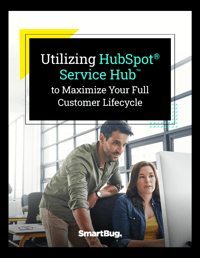
Customer acquisition is critical to the success of your business. I know—no pressure, right?
A customer acquisition platform can make or break your business, so it’s important to find the ideal channels that work for your company. Let’s take a look at how you can find the perfect platform—and how to tell if it’s working for you.
What Is Customer Acquisition Cost?
Customer acquisition cost is the total amount a business spends to acquire new customers. This includes up-front costs, such as pay-per-click (PPC) ads, and ongoing efforts such as email campaigns. Understanding how much you’re spending on customer acquisition will help you identify areas for saving and determine if you’re spending too much on some channels. If you develop your strategy correctly, you should be able to lower your customer acquisition cost while increasing your customer lifetime value.
When someone purchases your product or subscribes to your service, they’re considered an acquired customer. Typically, customer acquisition is a central goal of a business—after all, that’s what’s going to determine if your business is successful.
Your customer acquisition strategy will depend on different factors. If your business is new, customer acquisition will be a top priority. If your business has been around for a while and people are familiar with your brand, your strategy may be more focused on keeping your customer base happy and supporting retention and loyalty.
Of course, acquisition and retention are related. All loyal and repeat customers started out as new customers, so even if your business has a large customer base, it’s still important to create opportunities for new customers to discover your brand. One of the key ways to do this is to use a variety of platforms for customer acquisition, including:
- Social media
- Your business website
- Your blog
- Email marketing
- Third party review sites
- Paid ads such as Facebook or Google ads
How to Find a Customer Acquisition Platform
You can wait for customers to naturally come to you, but that strategy won’t sustain your business or profits over time. You need a repeatable way to attract leads, nurture the relationship until leads become sales-ready, and then convert them into customers. This is where your customer acquisition platform comes in. But how do you find the right one(s) for you? We’ve got you—here are a few simple steps to follow.
Step 1: Who Are You Targeting?
Understanding who your target audience is and creating buyer personas (here’s our free template to help you get started) are essential to finding an ideal customer acquisition platform. If you’re pursuing the wrong type of customer, you won’t be able to successfully increase conversions.
Knowing who you’re targeting includes knowing where your customers spend their time, what they’re interested in, and their engagement levels. Remember, the whole point of determining who your target audience is and creating buyer personas is to pin down who you want to reach with your content. Without this information, you’re not trying to reach anyone in particular, which translates to a lack of engagement and interest in your brand.
Step 2: Determine Your Target Demographics
Once you’ve figured out your target customers, it’s time to understand their demographics. Are they primarily on Facebook, LinkedIn, or Instagram? What are the age ranges, income, and education levels? Where do they go for third party validation? This information is key to understanding the unique perspective of your audience so you can tailor content to their interests and present a solution to their challenges.
Knowing this information also helps you determine the best customer acquisition channels to reach this ideal audience. Depending on your business and your audience demographics, you may have more success on one platform versus another.
Step 3: Analyze Cost-Effectiveness
Once you’ve figured out your potential platforms, cost becomes the next concern. What organic traffic can you get on these platforms? How far is the money you spend going to get you?
To calculate your customer acquisition cost, divide the total amount you spend on your acquisition efforts by the number of new customers acquired as a result. This figure will tell you how much it costs to bring in a new customer. To earn a positive ROI, you should have a target customer acquisition cost to serve as a benchmark for your marketing efforts.
At this point, it’s important to analyze the cost-effectiveness and conversion rates of the platforms you’re considering and to assess your budget and available resources. Remember to evaluate the channels’ long-term sustainability and growth so you can strategically allocate your resources to maximize ROI.
Step 4: Narrow Down and Test Your Platforms
Once you’ve narrowed down your platforms, conduct some analysis. Has your business run ads on these platforms in the past? If so, what could have gone better? Why did the ads do well or why did they fall flat?
Before going all in on a customer acquisition platform, test it by running small campaigns and evaluating your click-through rates to identify which strategies perform well. Through continuous testing, you’ll be able to refine your messaging and test different elements of the channel, such as visuals, copy, or different call-to-action buttons to see what generates the most conversions.
Once you implement a strategy, optimize it by:
- Testing messaging in your ads to see what is most effective
- Tracking performance by channel so you can allocate your resources appropriately
- Identifying which channels have the highest engagement so you can determine where to focus your efforts
Up Ahead: A Unified Customer Journey
Once you’ve acquired a new customer, what comes next? Continuing to nurture the relationship into a loyal customer base is key to your business’s growth—and we have the resources to help you do just that.
About the author
Courtney Fraas is a SmartBug Media Inbound Marketing Strategist based in Savannah, GA. With eight years of marketing experience, Courtney specializes in copywriting, visual design and project management. When she isn’t crafting customer-focused messaging, Courtney is busy traveling near and far, playing with her pup, and becoming an expert Airbnb host. Read more articles by Courtney Fraas.






















